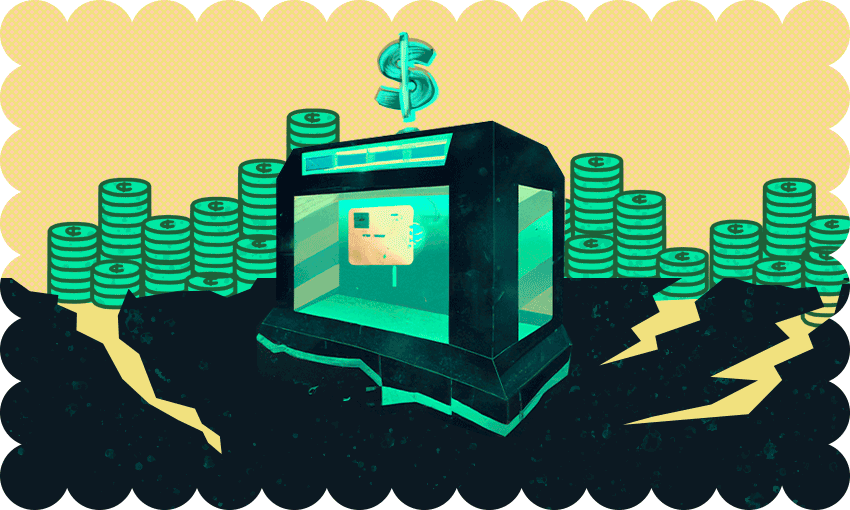A previously obscure bank – albeit with a connection to some of the world’s most famous companies – imploded last week. Duncan Greive explains.
What just happened?
Silicon Valley Bank (SVB) abruptly collapsed on Friday (US time) after a good old-fashioned bank run saw many customers withdraw funds, leading to it running out of cash. Rumours had swirled about its solvency for some time, but the triggering events were warnings from the likes of Peter Thiel’s Founder’s Fund that companies it had invested in should get their deposits out. Because banks always loan out more than they have deposited, when enough people asked for their money, Silicon Valley Bank was caught without enough liquid assets on hand to meet its obligations.
SVB was the largest bank to fail since Washington Mutual during the GFC in 2008, and the second-largest in US history, with US$209bn in deposits. It was closely followed by the failure of Signature Bank, a Wall St firm with significant exposure to the crypto sector. While its asset base, at US$88bn, was less than half that of SVB’s, the failure of another bank with close links to the tech sector so suddenly led to fears of contagion – of more banks tipping over. The US, unlike New Zealand, has hundreds of relatively small banks, many of which saw sharp declines in their value as investors speculated about whether these were isolated incidents or indicative of more widespread issues.
Why was SVB so exposed?
While relatively small, SVB has a key role in the tech sector, making loans and opening accounts for many of the tech firms which have had a huge impact on the world over the past 40 years. Household names like Shopify, Pinterest, Roku and Andreesen-Horowitz banked there, many with tens of millions of dollars in accounts they relied on for basic operating expenses like payroll.
The problem arose when SVB invested in a large amount of government bonds in 2021, paying a relatively low fixed rate of interest. When interest rates rose, it had to pay more interest to cover its own depositors than it was taking in from the bonds – and because the bonds were meant to be owned for many years, it could not sell them for face value. As more and more of those who banked there became aware of its issues, they started to withdraw funds, worrying that the bank would be unable to meet its obligations – a classic fear-driven bank run.
A bank run – isn’t that more of a Great Depression thing?
A bank run is a situation where a large number of account holders withdraw their funds from a bank all at once. Because a bank always loans out more money than it has on hand at any given time, it is vulnerable to such a scenario, if a perception takes hold that it might not have enough cash around to cover its deposits. During the Great Depression in the 1930s, bank runs were commonplace – over 9,000 banks failed, devastating many American communities. Ultimately the economy only turned around through major government intervention, leading to the creation of the FDIC, which rescued Silicon Valley Bank, and ultimately paved the way for a much more interventionist style of central bank, such as that we experienced post-Covid.
Were any New Zealand businesses impacted?
Yes. RocketLab was perhaps the most-prominent, with US$38m held at SVB – yet due to its scale this represents less than 10% of its cash holdings. Two NZX-listed companies also used the bank, with Comvida’s subsidiary joint venture Caravan Honey and IkeGPS both impacted. Crimson Education also claimed to have withdrawn its funds just 30 minutes prior to wires being stopped.
More broadly, the news might quixotically be welcomed by New Zealand’s banks. The Greens are calling for a windfall tax on banks, and PM Chris Hipkins expressed discomfort with fresh record bank profits on RNZ this morning. Yet the SVB crisis can be read as an endorsement of a highly concentrated banking sector, with New Zealand’s banks comparatively huge, very well-capitalised and spread across a large number of sectors, meaning a similar situation is hard to envisage in the local market.
Could this be the start of the next financial crisis?
It’s unlikely. Temperatures ran hot over the weekend, with US Treasury Secretary Janet Yellen mentioning that they were monitoring “a few banks”, and saying of a bailout “we’re not doing that again”. But after the collapse of Signature Bank, the government moved to assure depositors that they would have full access to their funds from Monday (US time).
This was meant to send the message to markets that the many large technology firms which used SVB as their everyday bank could continue to operate as normal. Prior to these statements some tech stocks were hit hard in after hours share trading, based on fears that the bank’s collapse might have ripple effects into the already-troubled tech sector. The intention is to find a buyer for SVB – likely wiping out holders of its stock and debt, but ensuring the broader market is protected from further chaos.
